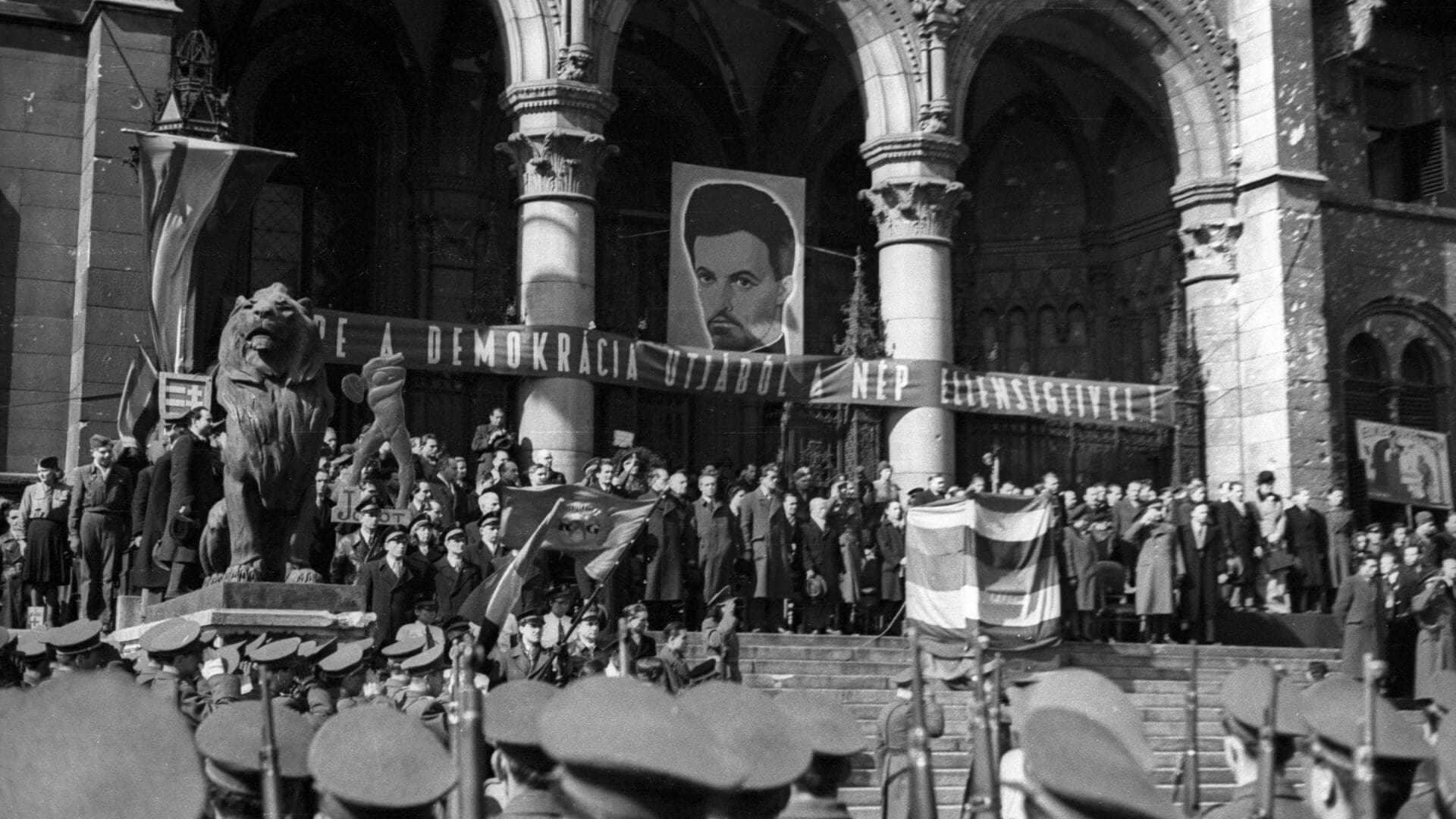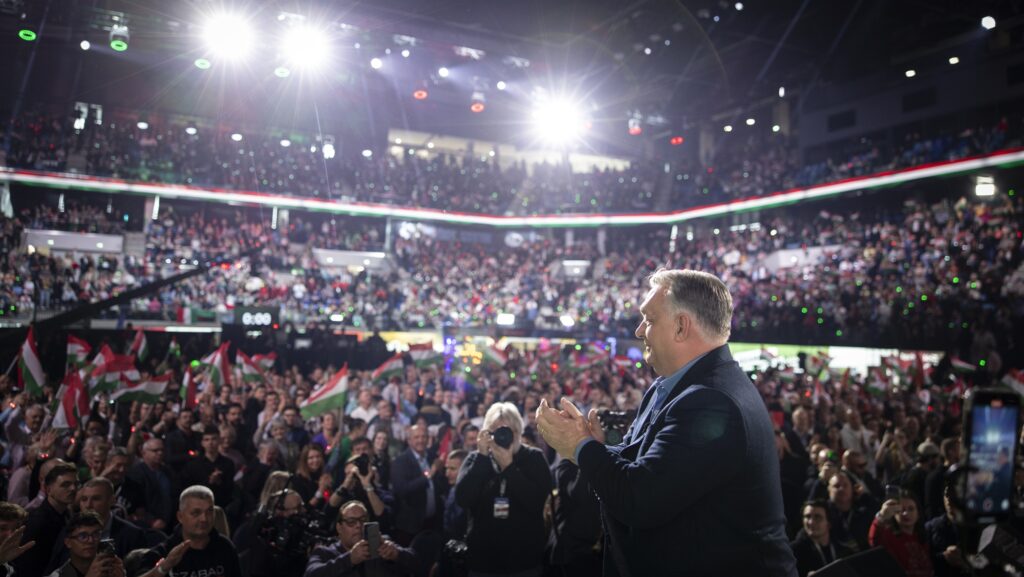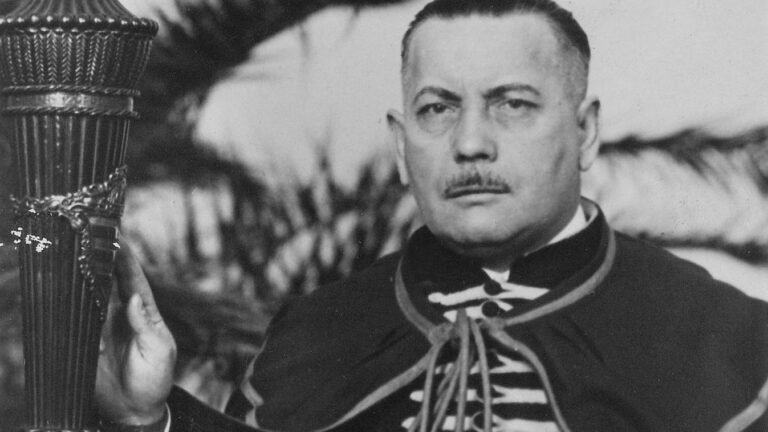Although the message of the Hungarian Revolution of 1848-49 is clear—freedom and democracy, self-determination and, among other things, the rejection of foreign wars—after WWII the country was faced with a new dilemma: what to do with the legacy of 1848? On 15 March 1945, not all the German troops had been driven out of Hungary, the Arrow Cross flag was still hanging on the town hall in Sopron, but the ‘liberated’ Szeged—which was actually under Soviet occupation—was already ‘celebrating’.
According to Márk Csarnai’s article,[1] József Révai, one of the chief ideologists of the Communist Party, in his article for the 15 March issue of the newspaper Délmagyarország, drew a parallel between the struggles of 1848 and 1945, and gave new meaning to this day: ‘Today, too, the masses of the people must stand up for what they stood up for on 15 March 1848: Hungarian independence and freedom. The aim of the struggle today is still the same as it was on 15 March 1848: to win national independence against the Germans and to win democracy against Hungarian reaction. The task is to finish what Kossuth, Petőfi and Táncsics started, but were unable to finish it, because of the treachery of the Hungarian landlords. A new struggle for freedom, a new liberation of the serfs is on the agenda. And today, as in 1848, the one is inseparable from the other: whoever wants land reform, whoever wants democracy, whoever wants to destroy fascist and feudal reaction, must proclaim and fight for freedom against the German oppressors…’
This, of course, was highly untrue.
The Communists would, in fact, become the chief agents in the disenfranchisement of the Hungarian peasant masses;
but little room was left for balanced thinking here. Ten days later, the Communist daily Szabad Nép published a pair of reviews, one on Stalin’s treatise on dialectical and historical materialism and the other titled ‘Petőfi and the War of Independence’, by Aladár Mód.[2]
The years that followed were to see similar artifice in the politics of memory. The Communists (should have) had to face up to the fact that their main supporter was the Soviet army, which had first liberated Hungary, only to then occupy it. This was particularly unpleasant in the context of 1848, since the revolution had been defeated by the troops of Tsarist Russia, which aided the Austrians, and the main demand of the revolution was that there should be no foreign troops in Hungary.
In 1946, at the official 15 March commemoration, not only the Communist actor Tamás Major, but also Deputy Prime Minister Mátyás Rákosi delighted the Budapest crowd with the message that ‘for decades, a whole series of oppressive governments have officially celebrated and faked 15 March.’[3] The Communist journalist Márton Horváth wrote an article from the perspective of ‘us, Communists’. He stated that ‘true patriotism’ would win against ‘chauvinism’, which should be ‘pushed out of the nation’s body’, he warned. He urged readers to contemplate the ‘great lessons of our history’ daily, in order to strengthen ‘the internal process of becoming a democracy’.[4] This, of course, came at a time when the internal opponents of Communism were being intimidated, arrested, and tortured on a daily basis.
A ‘proper’ context was being set in terms of foreign policy as well. Next to Communist historian Erik Molnár’s message (‘The memory of the March revolution calls us to action’) stood Stalin’s statement in the Pravda: ‘The nations [of the world] did not shed their blood so that the rule of Hitler would be exchanged for the rule of Churchill.’[5] A few years later, Szabad Nép published a ‘small cyclopaedia’ in order for the average person to better understand history: here Spartacus, the Hungarian pagan lord Vata, the peasant revolt leader György Dózsa, and the revolutionaries Petőfi and Táncsis were portrayed as if representing an unbroken continuity,
a sequence of events all leading up to Stalin, the ‘champion’ of the oppressed nations.[6]
One could cite the cynical and outrageous examples of how the Communists expropriated the memory of 15 March all day, but in the end, the message remains the same: the nascent Communists, all too eager to dismantle democracy and establish a Soviet-type dictatorship, made good use of the revolutionary message of 1848 and 1849. Distorted and unrecognisable, the message served a new purpose in their hands: that of bringing dictatorship and terror to the recently liberated country.
[1] Márk Csarnai, ‘Átpolitizált ünnep — a március 15-ei ünnepségejk 1945 és 1989 között’, (15 March 2020), Újkor.hu, https://ujkor.hu/content/atpolitizalt-unnep-marcius-15-ei-unnepsegek-1945-es-1989-kozott, accessed 14 March 2023.
[2] Szabad Nép, 25 March 1945.
[3] Szabad Nép, 16 March 1946.
[4] Szabad Nép, 15 March 1946.
[5] Szabad Nép, 15 March 1946.
[6] Szabad Nép naptára, 1947, 120.







